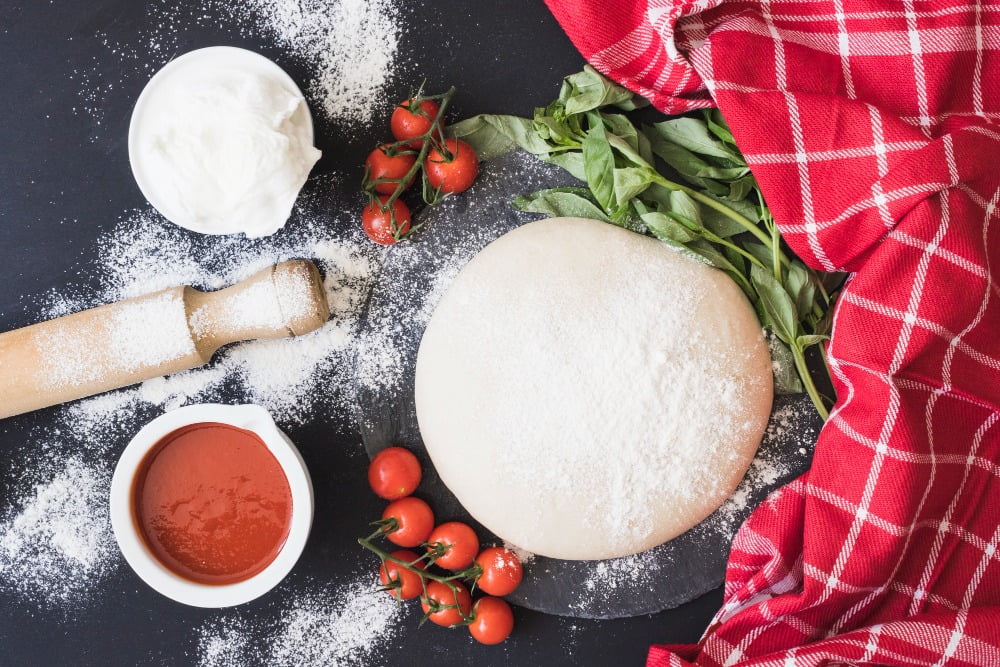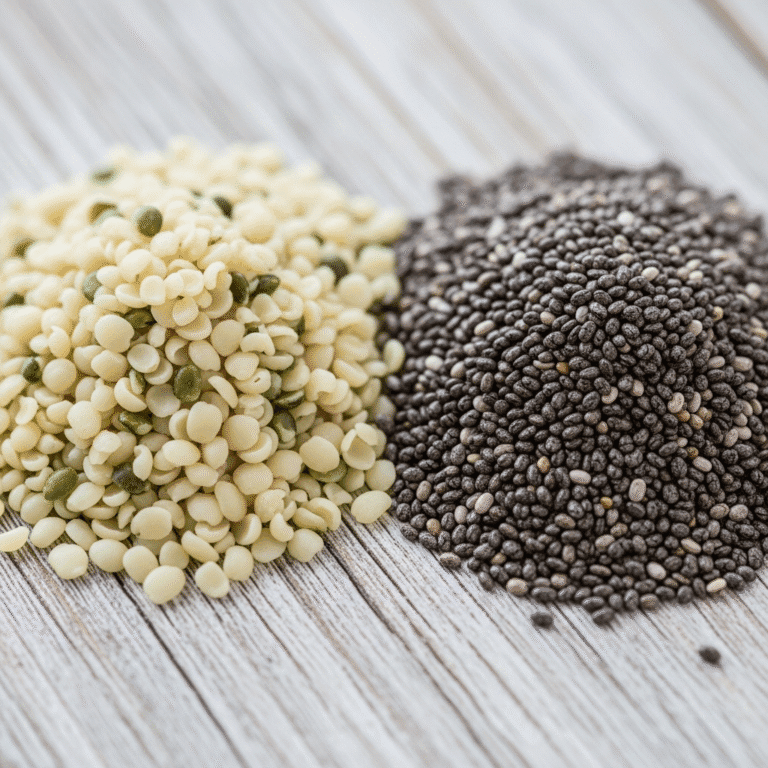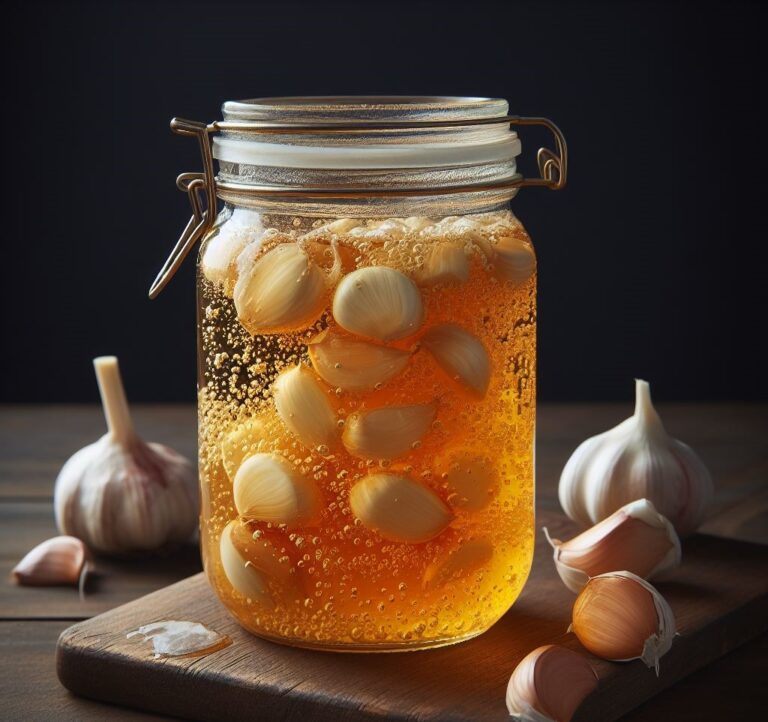FREE SHIPPING OVER $50
The Best Gluten-free Pizza Dough + Sauce Recipe
If you love pizza, but you’re gluten intolerant, you might think that you have to miss out on this delicious dish. But don’t worry, there’s a way to enjoy pizza on a gluten-free diet. In this post, I’ll show you how to make a gluten-free pizza dough recipe that is crispy, chewy, and full of flavor. You’ll also learn how to make a gluten-free pizza crust recipe with a simple and tasty sauce that complements the crust perfectly. Whether you’re celiac, gluten-sensitive, or just curious about gluten-free pizza, this post is for you. Join me as I explore the world of gluten-free pizza.
Mastering the Basics: Gluten-Free Pizza Dough Recipe

The main challenge of making gluten-free pizza dough is to create a dough that is elastic enough to stretch and hold its shape, but not too sticky or crumbly. Gluten is a protein that gives wheat flour its structure and elasticity, but it can also cause digestive problems for some people. To replace gluten, you can use a blend of gluten-free flours, such as rice flour, tapioca flour, potato starch, or cornstarch. You can also add some xanthan gum or psyllium husk, which are natural binders that help the dough stick together.
Ingredients
To make gluten-free pizza dough, you will need:
- 1 1/4 cups of warm water
- 2 teaspoons of active dry yeast
- 1 teaspoon of sugar
- 3 cups of gluten-free all-purpose flour (or your own blend of flours)
- 1 teaspoon of xanthan gum or psyllium husk
- 1 teaspoon of salt
- 2 tablespoons of olive oil
Instructions
Here are the steps to follow:
- In a small bowl, combine the water, yeast, and sugar. Stir well and let it sit for about 10 minutes, or until it becomes foamy.
- In a large bowl, whisk together the flour, xanthan gum or psyllium husk, and salt.
- Make a well in the center of the flour mixture and pour in the yeast mixture and the olive oil. Stir with a wooden spoon until a sticky dough forms.
- Transfer the dough to a lightly floured surface and knead it for about 15 minutes, adding more flour as needed to prevent it from sticking. The dough should be smooth and elastic, but not too dry or wet.
- Place the dough in a lightly greased bowl and cover it with a damp cloth. Let it rise in a warm place for about an hour, or until it doubles in size.
- Punch down the dough and divide it into two equal portions. You can use one portion right away or store it in the fridge or freezer for later use.
- To shape the dough, roll it out on a floured surface into a thin circle, about 12 inches in diameter. You can also use your hands to stretch and press the dough into your desired shape.
- Transfer the dough to a baking sheet or pizza stone that is lightly dusted with cornmeal or rice flour. Top it with your favorite sauce, cheese, and toppings.
- Bake the pizza in a preheated oven at 425°F for about 15 to 20 minutes, or until the crust is golden and the cheese is melted.
- Enjoy your gluten-free pizza!
More Gluten-Free Dessert Recipes
If you enjoy delicious gluten-free desserts, you’ll want to explore these other gluten-free dessert recipes too:
- Gluten-Free Brownies: Dive into the world of rich, fudgy gluten-free brownies that will please any brownie lover without the gluten.
- Gluten-Free Cornbread: Savory and gluten-free, this cornbread offers a perfect balance of flavors and a delightful texture.
- Gluten-Free Carrot Cake: Enjoy a moist and flavorful gluten-free carrot cake topped with creamy frosting, a timeless treat for special occasions.
- Gluten-Free Puff Pastry: Create a variety of sweet and savory treats with this gluten-free puff pastry. This versatile pastry adds a flaky and delicious touch to your gluten-free baking repertoire.
- Gluten-Free Lemon Bars: These zesty lemon bars have a buttery, gluten-free crust and a tangy lemon filling. They’re a refreshing treat for citrus enthusiasts.
These gluten-free dessert recipes are simple to prepare and taste just as good as their traditional counterparts. Enjoy them without missing the gluten!
Gluten-free Pizza Sauce Recipe

Making a homemade pizza sauce that is gluten-free, vegan, and full of flavor is easier than you think. All you need are some fresh ingredients and a few spices. Here’s how to do it:
Ingredients
- 4 medium ripe tomatoes, chopped
- 4 cloves of garlic, minced
- 1 small onion, diced
- 2 tablespoons of olive oil
- 1/4 cup of fresh basil, chopped
- 1 teaspoon of dried oregano
- Salt and pepper to taste
- A pinch of sugar
- Optional: red pepper flakes for some heat
Instructions
- Heat the olive oil in a saucepan over medium-high heat.
- Add the onion and garlic and sauté for about 10 minutes, until soft and golden.
- Add the tomatoes, basil, oregano, salt, pepper, sugar, and red pepper flakes (if using) and bring the mixture to a boil.
- Lower the heat and simmer the sauce for about 15 minutes, stirring occasionally, until it thickens and reduces.
- Your gluten-free pizza sauce recipe is ready to use or store.
You can spread this sauce over your gluten-free pizza dough or keep it in an airtight container in the refrigerator for up to a week. Enjoy your pizza night with this amazing sauce that will make your taste buds happy.
Savoring the Gluten-Free Pizza Experience
You’ve done it! You’ve made your gluten-free pizza dough and sauce from scratch, using simple and wholesome ingredients. Now comes the best part: savoring your gluten-free pizza creation!
But how do you make the most of your gluten-free pizza experience? How do you enjoy every bite without feeling guilty or deprived? Here are some tips to help you relish your gluten-free pizza:
- Appreciate the aroma: Before you dig in, take a moment to smell your pizza. Notice the fragrant herbs, the melted cheese, and the savory sauce. Inhale deeply and let your mouth water. This will prepare your taste buds for the deliciousness to come.
- Cut small slices: Instead of cutting your pizza into large wedges, cut it into smaller pieces. This will help you eat more slowly and mindfully, and savor each bite. You’ll also feel more satisfied with less food, and avoid overeating.
- Chew well: Don’t rush through your pizza. Take small bites and chew them well, enjoying the texture and flavor of your gluten-free crust, sauce, cheese and toppings. Chewing well will also help you digest your food better, and prevent bloating or discomfort.
- Pair it with a salad: To balance out your meal, serve your pizza with a fresh salad. You can use any greens and veggies you like, and dress them with a simple vinaigrette or lemon juice. A salad will add more fiber, vitamins, and antioxidants to your diet, and make you feel fuller with fewer calories.
- Drink water: To stay hydrated and flush out any excess sodium from your pizza, drink plenty of water. Water will also help you feel more satiated, and prevent overeating or cravings. You can add some lemon, cucumber or mint to your water for extra flavor and freshness.
FAQs
Yes, gluten-free pizza can be safe for celiacs when it’s prepared with strict gluten-free protocols and ingredients to prevent cross-contamination.
Various types of pizza can be made gluten-free by using a gluten-free crust and carefully selecting toppings and sauces without gluten-containing ingredients.
The best gluten-free flour for pizza often combines rice flour, tapioca starch, and xanthan gum. This blend helps achieve a pizza crust with a texture and taste similar to traditional pizza.
Yes, Pizza Hut offers a gluten-free pizza option at select locations. It’s always advisable to check with your local Pizza Hut for availability.
For many individuals with gluten sensitivity or celiac disease, gluten-free pizza is easier to digest because it lacks the proteins that can trigger adverse reactions. However, individual reactions may vary, so it’s essential to pay attention to how your body responds.
Before You Leave
You’ve just learned how to make the best gluten-free pizza dough and sauce from scratch. Now you can enjoy a delicious and healthy pizza at home anytime you want. Isn’t that amazing?
We hope you found this recipe easy to follow and fun to make. If you did, please share it with your friends and family who also love pizza. And don’t forget to leave a comment below and let us know how your pizza turned out.
Thank you for reading our blog post and happy baking!

Gluten-free Pizza Dough Recipe
Equipment
- Oven
- Small bowl
- Large bowl
- Wooden spoon
- Measuring Cups and Spoons
- Rolling Pin
- Baking sheet or pizza stone
Ingredients
- 1¼ cups of warm water
- 2 tsp of active dry yeast
- 1 tsp of sugar
- 3 cups of gluten-free all-purpose flour (or your own blend of flours)
- 1 tsp of xanthan gum or psyllium husk
- 1 tsp of salt
- 2 tbsp of olive oil
Instructions
- In a small bowl, combine the water, yeast, and sugar. Stir well and let it sit for about 10 minutes, or until it becomes foamy.
- In a large bowl, whisk together the flour, xanthan gum or psyllium husk, and salt.
- Make a well in the center of the flour mixture and pour in the yeast mixture and the olive oil. Stir with a wooden spoon until a sticky dough forms.
- Transfer the dough to a lightly floured surface and knead it for about 15 minutes, adding more flour as needed to prevent it from sticking. The dough should be smooth and elastic, but not too dry or wet.
- Place the dough in a lightly greased bowl and cover it with a damp cloth. Let it rise in a warm place for about an hour, or until it doubles in size.
- Punch down the dough and divide it into two equal portions. You can use one portion right away or store it in the fridge or freezer for later use.
- To shape the dough, roll it out on a floured surface into a thin circle, about 12 inches in diameter. You can also use your hands to stretch and press the dough into your desired shape.
- Transfer the dough to a baking sheet or pizza stone that is lightly dusted with cornmeal or rice flour. Top it with your favorite sauce, cheese, and toppings.
- Bake the pizza in a preheated oven at 425°F for about 15 to 20 minutes, or until the crust is golden and the cheese is melted.
- To make the sauce, you can use store-bought pizza sauce or make your own by blending some tomatoes, garlic, basil, oregano, salt, and pepper in a blender or food processor. Spread the sauce evenly over the dough, leaving some space around the edges.
- To add the cheese, you can use vegan cheese or dairy cheese, depending on your preference and dietary needs. Sprinkle the cheese generously over the sauce.
- To add the toppings, you can use any vegetables, fruits, meats, or herbs that you like. Some of my favorites are mushrooms, olives, pineapple, ham, and basil. Arrange the toppings over the cheese as you wish.
- Bake the pizza in a preheated oven at 425°F for about 15 to 20 minutes, or until the crust is golden and the cheese is melted.



